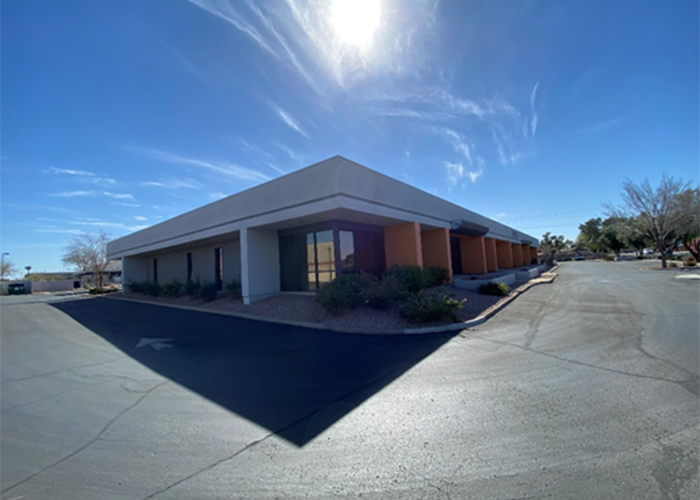Real estate depreciation provides valuable tax advantages for property developers and owners. Applying the available depreciation rules on real estate assets allows commercial and residential rental property owners to deduct substantial amounts of the purchase price and/or improvement costs of a property, thereby dramatically reducing their taxable income.
Straight-line depreciation schedules — 39 years for commercial buildings and 27.5 years for residential rental property — do not distinguish individual building fixtures and components from the building as a whole. Enter cost segregation, an IRS-approved procedure by which commercial property owners can accelerate depreciation and reduce the amount of taxes owed. The cost segregation process breaks down the various interior and exterior components of a property and reclassifies them into four main categories:
- Personal property (decorative/removeable finishes/fixtures, dedicated/specialty components, etc.)
- Land improvements (landscaping, parking lots, sidewalks, retaining walls, etc.)
- Real property (structural building components, foundations, general building systems, etc.)
- Land (non-depreciable)
Assets that fall into the personal property or land improvements categories can be depreciated over shorter class lives, such as 5-years, 7-years, or 15-years. As a result, the property owner’s income tax liability is lowered because they are able to deduct qualifying personal property and land improvement assets at a more accelerated rate than straight-line depreciation allows, increasing their business’s cash flow and profitability.
Cost segregation became even more valuable with the passage of the Tax Cuts and Jobs Act in 2017. Under the new law, a taxpayer may elect to expense 100% of the cost of any Section 179 personal property (as identified in a cost segregation study) acquired and placed in service after September 27, 2017 and before January 1, 2023 in the year the property is placed in service. This 100% bonus deduction is only available until 2022 and will be slowly phased out until it is completely gone by 2027. This allows for all identified short-lived assets (assets with class lives less than 20 years) to be deducted in the first year, providing a massive initial benefit.
In March of 2020, the CARES Act retroactively modified the depreciable life of interior improvements on a nonresidential building (known as qualified improvement property or QIP) from 39 years to 15 years, delivering a much shorter depreciation period and making it eligible for 100% bonus depreciation. This change also increased the importance of cost segregation studies as part of a comprehensive tax planning strategy.
The Cost Segregation Study
In order to take advantage of the accelerated commercial real estate depreciation described above, you must have a cost segregation study done. To avoid being challenged under audit by the IRS, it is important that the study be prepared only by a team of experienced professionals — generally qualified engineers and/or tax professionals — who have a thorough understanding of IRS requirements and applicable tax laws, accounting, engineering, construction methods, building materials, and construction costs. The IRS requires all cost segregation studies be “engineering based,” which demands that a range of building components be analyzed, such as plumbing, electrical, and mechanical systems.
The cost segregation study identifies all components and costs related to a real estate asset (including both constructed and acquired properties) and reclassifies them into the four categories listed above, identifying those that meet the IRS’s Modified Accelerated Cost Recovery System (MACRS) requirements for eligibility for the accelerated depreciation. The findings are described in a comprehensive report that typically includes a property description, photos of the property, an engineering-based cost accounting of the components, methodology for any assumptions made, and references to applicable tax law.
The cost segregation study gives commercial real estate owners the ability to shelter significantly more taxable income from real estate operations due to the accelerated depreciation deductions. Sheltering additional taxable income means an immediate reduction in the amount of income taxes actually paid in the current tax year, which translates into an immediate increase in cash flow from real estate operations.
Example: A taxpayer purchases an office project for $1.2 million, and when excluding land at an assumed value of $200,000, their depreciable basis is $1 million. If no cost segregation study is performed, the taxpayer enters the cost into the fixed-asset system as 39-year property. After the first five years, the taxpayer has accumulated $127,170 in depreciation deductions. However, consider the same property using a cost segregation study. After the detailed analysis is combined with an understanding of what qualifies as short-life property as defined by Internal Revenue Code Section 1245, the depreciable basis is reclassified into 5-year,15-year, and 39-year property. After the first five years, the taxpayer has a total of $389,019 in accumulated depreciation deductions — $317,227 of which is available as a deduction in year one when 100% bonus depreciation is applied.

The obvious difference is that the taxpayer has increased the accumulated depreciation deductions by $292,617. With a cost segregation study, the taxpayer has taken the majority of their depreciation up front and realizes that a dollar saved now is worth more than the same dollar in 5, 10, and even 15 years. As a result, the taxpayer has a net present value savings of over $100,000.
Another valuable benefit of a cost segregation study is that it can be performed on a building placed in service in the past using a look-back study. If a cost segregation study has not been performed, property owners can “catch-up” the additional depreciation through a look-back study.
Cost segregation is the key to unlocking hidden savings in commercial property. Careful analysis of the composition and cost allocations of commercial property can provide significant after-tax cash flows for real estate owners and investors.
Contact
GARY BARAGONA
Director of Research
415.229.8925
gary.baragona@kidder.com
Written by
RYAN BEGLEY
VP, Cost Segregation Engineer
Valuation Advisory Services
ryan.begley@kidder.com
JOHN FIORAMONTI
Senior Business Writer
Kidder Mathews Research
